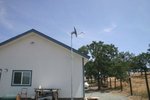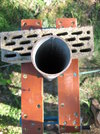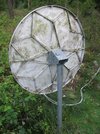A
archive10
Guest
All the Channel Master and Prodelin manuals have a section on making a suitable concreted-in pole for mounting the dish on.
(Interestingly - the text and diagrams are almost identical, to the degree that one would think it's the same guy writing for both companies!)
But that all state that the pole that is concreted in needs to be filled completely with concrete.
I assume this is an easy way of keeping moisture out of the pole, now that the cement mixer is out anyway.
(It probably also adds rigidity to the pole. (which is a hard thing to write without thinking of a slightly different topic.))
(And funny how it's called a cement mixer when you are making concrete... ??)
But... what if the pole is mounted on T-K brackets or similar?
Should we concrete that stuff up too? and giving the add in weight, should we consider a scenario where the pole is not actually concereted into the ground, but resting on, say, a garden slab, to take the load, but still filled with concrete?
(Interestingly - the text and diagrams are almost identical, to the degree that one would think it's the same guy writing for both companies!)
But that all state that the pole that is concreted in needs to be filled completely with concrete.
I assume this is an easy way of keeping moisture out of the pole, now that the cement mixer is out anyway.
(It probably also adds rigidity to the pole. (which is a hard thing to write without thinking of a slightly different topic.))
(And funny how it's called a cement mixer when you are making concrete... ??)
But... what if the pole is mounted on T-K brackets or similar?
Should we concrete that stuff up too? and giving the add in weight, should we consider a scenario where the pole is not actually concereted into the ground, but resting on, say, a garden slab, to take the load, but still filled with concrete?




